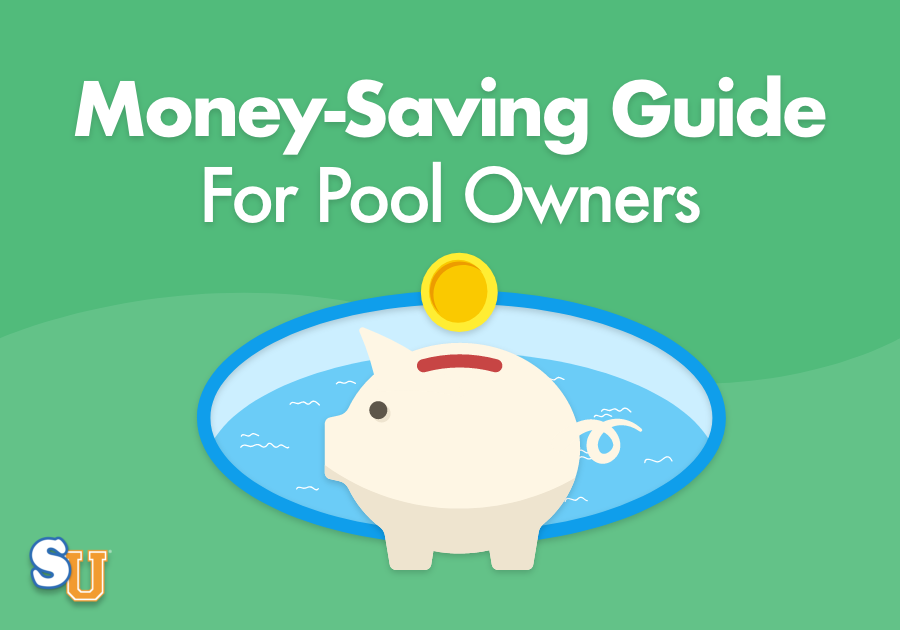
Owning a saltwater pool is like having a slice of the beach in your backyard—it’s a luxurious escape from the everyday hustle. But, as with any oasis of relaxation, a saltwater pool requires meticulous care to maintain its inviting allure.
While the thought of maintenance might seem daunting, fear not; with the right knowledge and a bit of dedication, you can keep your saltwater sanctuary pristine and ready for that refreshing dip at any time.
In this detailed guide, we’ll cover everything from the fundamental steps of maintenance to common pitfalls and practical DIY tips. Let’s dive into the clear waters of saltwater pool maintenance and ensure your pool remains the envy of the neighborhood.
Understanding the Saltwater System and Its Benefits
Before we delve into maintenance, it’s essential to comprehend how a saltwater pool differs from its chlorine-based counterpart. Saltwater pools use a salt chlorine generator, converting salt to chlorine through a process called electrolysis.
This system reduces the need for adding chlorine manually, leading to softer water and a more comfortable swimming experience—no more red eyes or itchy skin commonly associated with traditional chlorine pools.
Step 1: Test and Adjust the Salt Levels
Consistent monitoring of the salt level in your pool is crucial for the chlorine generator to work effectively. Ideal salinity levels range from 2700 to 3400 parts per million (ppm). To ensure accuracy, invest in a reliable water testing kit and check the salt concentration regularly.
If the levels are too low, the generator won’t produce enough chlorine, leaving your pool vulnerable to bacteria and algae. On the flip side, excessively high salt can lead to damage to your pool equipment and surfaces. To adjust the salt levels, follow the instructions provided by your pool equipment manufacturer.
Step 2: Monitor and Balance the pH Level
The pH level of your pool water plays a significant role in the efficiency of chlorine sanitization. The sweet spot for pH in a saltwater pool is between 7.2 and 7.8. Regular testing will alert you to fluctuations that may require attention.
If your pH leans toward the acidic side (below 7.2), it can cause the chlorine to dissipate quickly and harm pool components. Conversely, alkaline water (above 7.8) reduces chlorine’s effectiveness and can lead to scale buildup.
Balancing agents, such as muriatic acid or sodium bicarbonate, can be used to correct the pH level as needed.
"Here's a guide to help pool owners save money!
"Learn how to save money with pool maintenance hacks, the right equipment upgrades, and exclusive discounts for pool supplies."
Step 3: Check the Stabilizer Level
Cyanuric acid, commonly known as a stabilizer, shields your chlorine from being rapidly degraded by sunlight. Aim for a stabilizer concentration of 70-80 ppm for optimal protection.
If stabilizer levels are too low, you’ll burn through chlorine rapidly on sunny days, leading to higher maintenance costs and an increased risk of pool contamination.
However, excessive stabilizers can “lock” the chlorine, making it less effective in sanitizing your pool. In such instances, partially draining and refilling your pool with fresh water can help bring stabilizer levels back into balance.
Step 4: Clean the Salt Cell
The salt cell is the heart of your chlorine generator, but over time, minerals can accumulate on its plates, impeding chlorine production. Cleaning the salt cell every few months—or as recommended by the manufacturer—is integral to maintaining its efficiency.
Most systems come with a “cell cleaning” mode and specific instructions on how to perform this maintenance.
Some units require removing the cell and soaking it in a vinegar solution, whereas others may recommend a mild muriatic acid mixture. Always wear protective gear and follow proper safety procedures when handling acidic solutions.
Step 5: Shock the Pool
Even with seamless chlorine generation, it’s advisable to “shock” your pool periodically. This process entails adding a large dose of chlorine to eliminate any lingering bacteria or algae.
Saltwater pools often require less frequent shocking than other pool types. As a rule of thumb, shock your pool after heavy use, a rainstorm, or signs of algae growth.
Shocking is typically done at night when the sun can’t degrade the added chlorine. Ensure no one swims in the pool until the chlorine levels return to a safe range (usually 1-4 ppm), which can take up to 24 hours.

Avoiding Common Maintenance Mistakes
Staying vigilant with your saltwater pool maintenance is critical for avoiding typical errors. Neglecting regular testing can result in imbalances that might lead to ineffective chlorine production or pool equipment damage.
It’s vital to monitor and adjust the salt, pH, and stabilizer levels to reinforce the longevity and safety of your oasis.
Ignoring the cleanliness of your pool can also bring about unwelcome consequences. Organic matter like leaves, sunblock, and body oils can diminish chlorine’s sanitizing power, demanding more frequent chemical adjustments.
DIY Tips to Keep Your Pool in Top Condition
To keep your saltwater pool sparkling, here are some hands-on tips:
- Use a High-Quality Water Testing Kit: An accurate testing kit is indispensable for maintaining proper water chemistry. Preferably, test your water weekly and after significant weather events.
- Stick to a Regular Maintenance Schedule: Consistency is key. Employing reminders or a checklist can help ensure you never miss essential maintenance tasks.
- Properly Store Pool Chemicals: Environmentally sensitive chemicals should be kept in a cool, dry place away from sunlight to retain their efficacy.
- Physical Cleaning is Just as Important: Skim the surface, vacuum the bottom, and brush the walls of your pool regularly to prevent algae buildup and keep your pool inviting.
Check out our Recommended Pool Maintenance Accessories on our Amazon Storefront!
Conclusion: Navigating the Saltwater Landscape
While maintaining a saltwater pool requires effort, it doesn’t have to be an uphill battle. With a dash of diligence, your pool can remain an opulent escape free from the caress of algae and the ghosts of imbalanced chemicals.
As experienced pool owners will tell you, the devil is in the details—stay attentive to those salt and pH levels, cherish your chlorine production, and make friends with your testing kit.
Remember, like most things in life, there’s a learning curve to becoming a seasoned pool maintainer. But with time and persistence, the process becomes intuitive, a rhythmic dance of testing, treatment, and triumph.
So, roll up your sleeves, open your test kit, and dive into the refreshing world of saltwater pool maintenance. Your personal slice of paradise awaits, a testament to your dedication and the promise of gleaming waters.
Thank you for joining me on this journey. I hope you’ve found this content helpful and valuable.
If you have any questions or suggestions for future content please do not hesitate to let me know in the comment section. Always Happy to Help!!
Stay tuned for more intriguing insights in our upcoming posts. Remember, the world is full of fascinating perspectives—keep exploring, learning, and growing!
Cheers!



